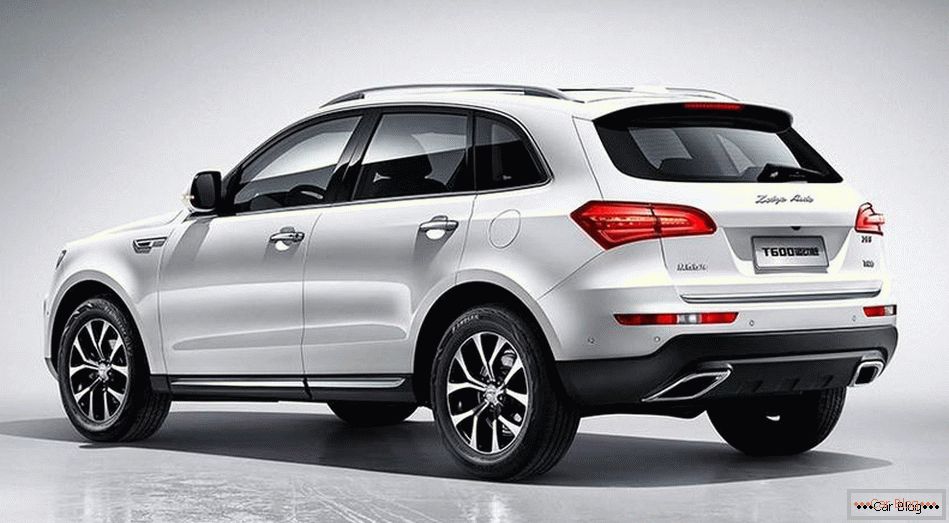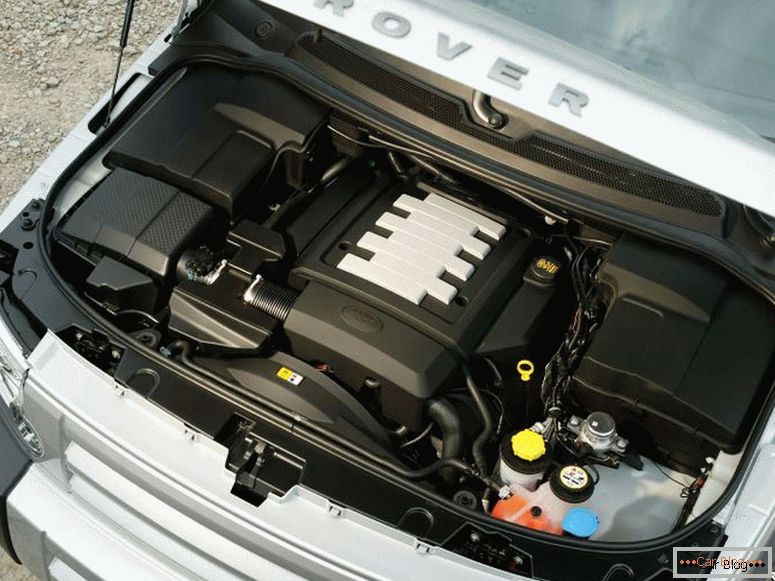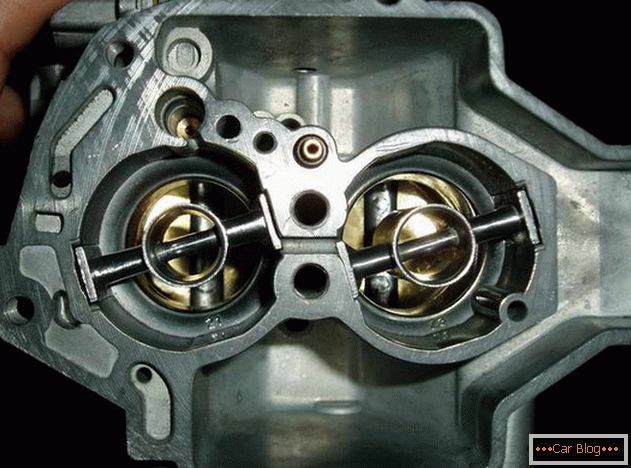In a large modern city, the number of cars on the roads is staggering. Transport around more and more, and less space. Drawing attention to this problem, automakers began to produce new models of cars with an integrated parking assistant in order to make life easier for drivers. And what should those who have acquired “iron friends” do before all-around equipping them with parking devices? Choose parking sensors yourself and install it! About how to choose parking sensors, and what nuances to consider before buying, and will be discussed in our material.
Looking at the range of companies engaged in the production of PDCs, the eyes diverge. The line of these devices is so wide that every motorist will find an option for the liking and finances. Therefore, going to the store for shopping, it will be useful to know what types of PDCs exist.
Content
- 1 Where is located - so called
- 2 Variations on picking
- 3 7 main characteristics
Where is located - and is called

The advantage of tape PDC in the complete absence of dead zones
By location, these devices are classified as follows:
- Rear parking sensors - the most common option, the sensors are installed on the rear bumper cars. The activation of the gadget takes place at the moment when the reverse gear is engaged.
- Front parking sensors work on the principle of the previous device. Its sensors are mounted on the front bumper, and the inclusion occurs at a certain speed mode.
- Combined parking sensors - a hybrid of the two above options. It includes from 6 to 8 sensors installed on both bumpers, as well as 1-2 screens that capture all incoming data.
Variations on picking
Depending on the manufacturer and the "filling" avtogadzheta, there are several groups of parking sensors:
- Standard - the most popular and popular option. Includes several sensors (2-8 pieces), the number of which depends on the price of the kit. Also, standard parking sensors are equipped with separate circuits for both the rear and the front bumper.
- Ribbon - its name speaks for itself. This parking sensors made in the form of tape, glued to the entire surface of the bumper. Its main advantage, in contrast to the standard configuration, is the complete elimination of the probability of the occurrence of “dead zones”.
- A wireless is a device in which wireless channels are involved in transmitting a signal.
- Parktronic, equipped with a camera - the most expensive variation, convenient and functional in operation. The video camera displays on the monitor screen, installed inside the car, an image of the terrain in the field of view of the sensors. That is, the driver not only hears, but also sees obstacles in his path.
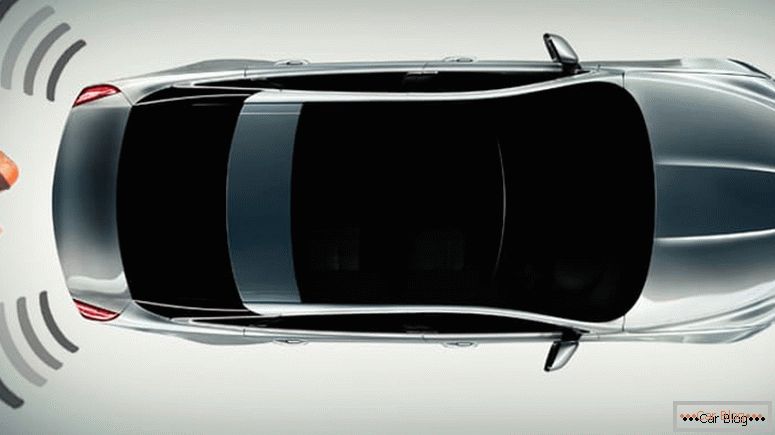
Parktronics with only two sensors have a rather extensive “dead zone”
7 main characteristics
Before you finally decide which parktronic to choose, you need to take into account the main characteristics of the models you like. They have a direct impact on the quality of the gadget. These include:
- The number of sensors. As already noted, their number varies from 2 to 8 pieces. Their number depends on the effectiveness of the device.
- Sensitivity. This aspect is responsible for the reliability and clarity of the signal transmitted to the driver. The higher it is, the more accurately the distance to the object is determined, and the risk of collision with it is minimized.
- The method of fixing sensors. To date, there are two options - mortise and invoice. In the first case, a small hole is cut in the car’s bumper into which the sensor is mounted. In the second - the sensor is installed directly on the surface of the bumper, painted in the color of the car and becomes completely invisible to the eye.
- The presence / absence of the display. This nuance matters when the car is not equipped with an on-board computer. There are different types of displays - LED, segment, or liquid crystal. Each of them has its minuses and advantages, the choice in each case is individual and is based on the preferences of the driver.
- Resistance to climatic conditions. Devices must have a high degree of protection against moisture and dust in order to work equally well regardless of their environment.
- Self-diagnosis system. This is an ultra-modern option, thanks to which the gadget independently diagnoses its state, finds problems in the system in time, eliminates them and stabilizes the workflow.
- Notification system. Three options for every taste - sound, optical and digital. The first signals an obstacle intermittent "squeak." The second displays data using LEDs, the color of which varies depending on the distance to the interfering object. With the third all information about the distance to the obstacle is displayed on the screen.
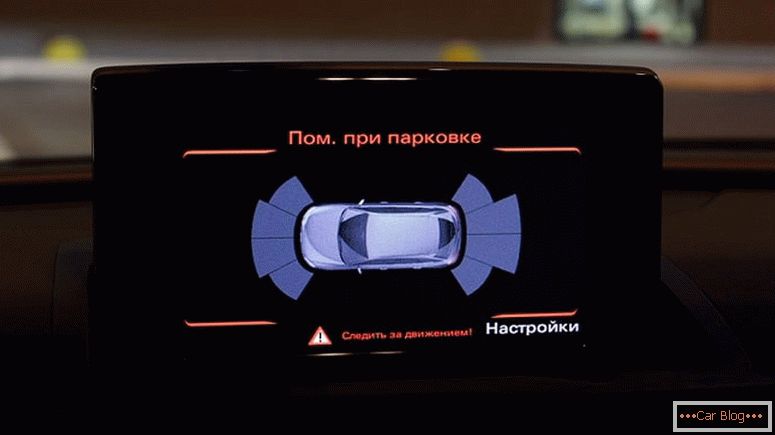
Many devices are equipped with LCD displays
We hope our advice on choosing a PDC has proven to be useful for those who plan to acquire the necessary and functional assistant. Remember that parking sensors - this is something that is not worth saving. After buying the cheapest equipment over time, you have to spend money on additional details and options, or even buy a new, more reliable and improved device. Easy choice and parking without problems!

